Key takeaways
- Activist teacher resources encourage critical thinking and empower students to challenge norms, fostering meaningful discussions on social justice.
- Padlet serves as an inclusive platform that amplifies every student’s voice, promotes collaboration, and organizes activist conversations effectively.
- Effective strategies for using Padlet include fostering teamwork through group tasks, encouraging thoughtful feedback, and maintaining ongoing engagement with regular reflections.
- Celebrating small wins and adapting to student feedback are essential for sustaining momentum in collaborative activism projects.

Understanding activist teacher resources
Activist teacher resources are more than just tools—they’re catalysts for change in the classroom. When I first explored these materials, I felt a mix of excitement and responsibility, realizing that teaching could go beyond textbooks to challenge injustice and inspire action. Have you ever wondered how a simple lesson could ignite a student’s passion for social change?
These resources often include lesson plans, multimedia, and platforms designed to foster critical thinking and empathy. I remember the first time I used a social justice video discussion guide; watching my students open up about difficult topics was both powerful and deeply moving. It made me appreciate how activist resources create safe spaces for honest conversations.
What sets activist teacher resources apart is their focus on empowerment—not just knowledge. They invite both teachers and students to question norms and envision a fairer world. This approach transformed my role in the classroom from lecturer to collaborator, and that shift has been profoundly rewarding.
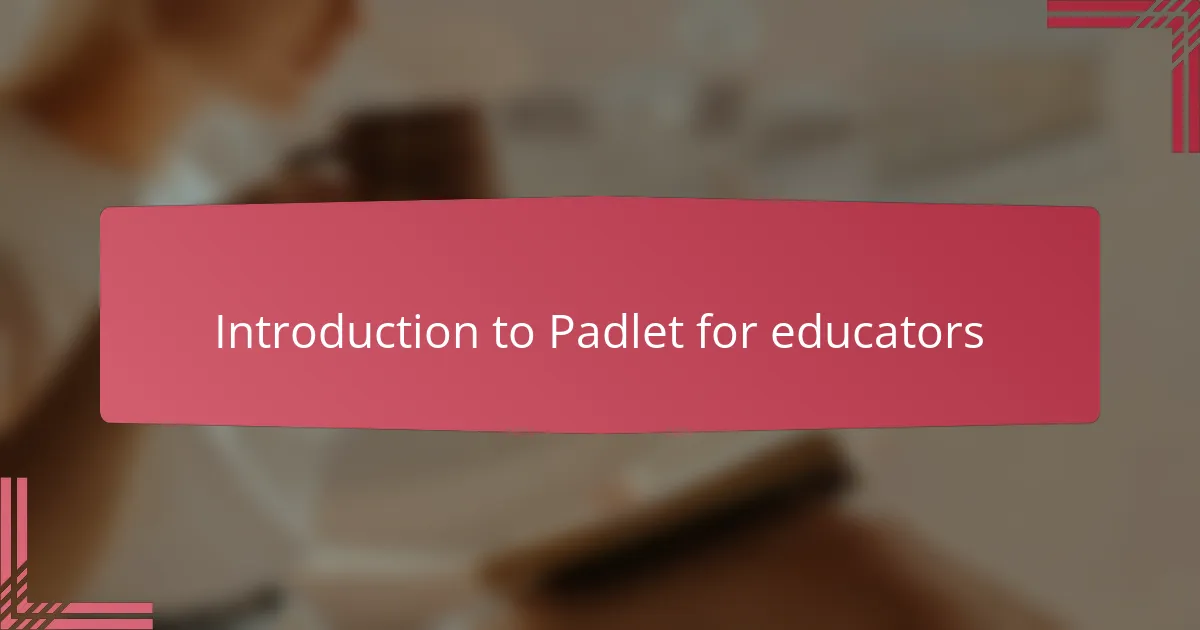
Introduction to Padlet for educators
When I first stumbled upon Padlet, I saw it as more than just a digital bulletin board—it felt like a blank canvas where every student’s voice could come alive. Have you ever wished for a tool that lets your class brainstorm, share, and reflect in real time without the chaos of paper or noise? That’s exactly what Padlet offers.
Early on, I noticed how easily Padlet broke down barriers between students. Instead of hands hesitating in the air, everyone could contribute at their own pace, whether by typing a thought, uploading an image, or even recording a quick audio snippet. It felt like creating a dynamic, living tapestry of ideas that was as diverse as the students themselves.
What excites me most about Padlet is its simplicity combined with flexibility. You don’t need to be tech-savvy to jump in, but the possibilities for collaboration and creativity are endless. It turned my classroom into a more inclusive space where learning happened together, not just side by side.
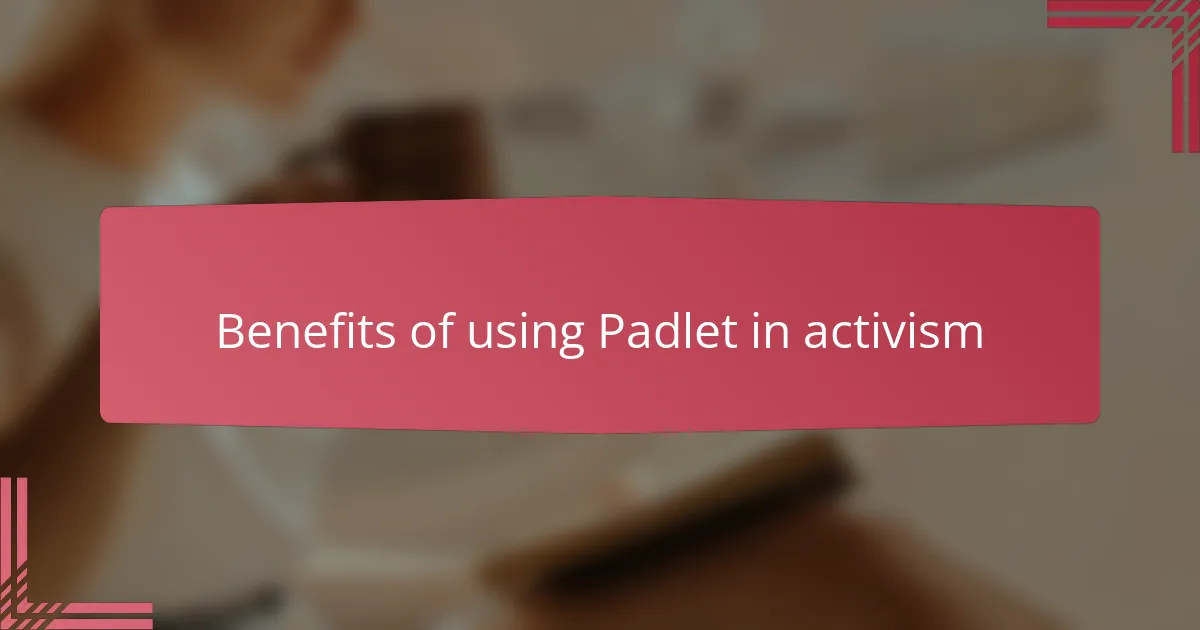
Benefits of using Padlet in activism
One of the biggest benefits I found using Padlet in activism is how it amplifies every student’s voice, even those who are usually shy or hesitant to speak up. Have you noticed how quickly quieter students can disappear in group discussions? Padlet gently levels the playing field, allowing everyone’s ideas to shine without fear of judgment.
Another thing I appreciate is how Padlet keeps our activist conversations organized and visible over time. It’s like having a digital scrapbook of our collective thoughts and actions that we can revisit and build upon. This continuity sparks deeper reflection and a stronger sense of community, which I believe is essential for sustaining passion in social justice work.
What really surprised me, though, was how Padlet encouraged collaboration beyond the classroom walls. When students saw their peers’ posts and responded to them, it created a ripple effect of engagement that extended into their daily lives. Isn’t that the heart of activism—creating connections that push ideas from theory into real-world change?
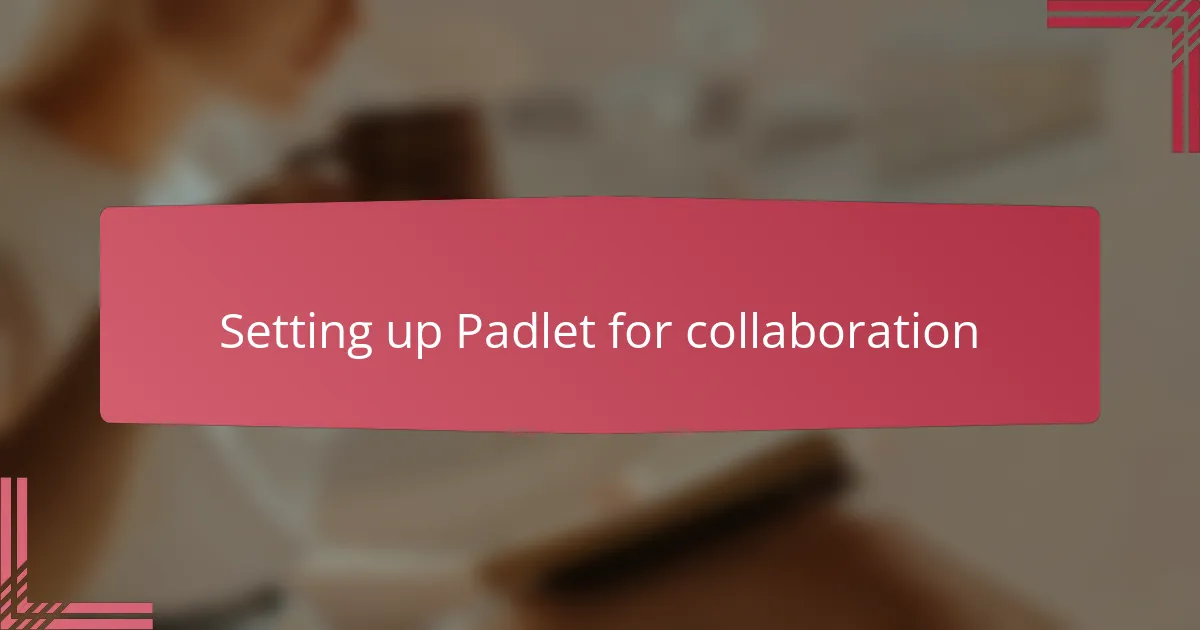
Setting up Padlet for collaboration
Setting up Padlet for collaboration was straightforward, but it required intentional steps to make sure every student felt invited to contribute. I started by creating a clear and simple board layout, choosing a template that matched our activist themes—like a grid for brainstorming or a timeline for tracking actions. Have you ever noticed how the right visual setup can immediately make a tool feel approachable and meaningful?
Next, I carefully adjusted the privacy and editing settings to balance openness with safety. I wanted students to freely share their thoughts without worrying about trolls or accidental deletions, so enabling moderated posts became essential. This small but crucial step built trust, turning Padlet into a digital space where honest, sometimes vulnerable conversations could happen.
Finally, I introduced Padlet with a warm-up activity that invited students to post their initial thoughts on social justice topics. Watching those first posts trickle in was exciting—it felt like unlocking a floodgate of ideas and emotions. Through this process, I realized that setting up Padlet is less about the tech itself and more about crafting a welcoming environment where collaboration naturally blooms.
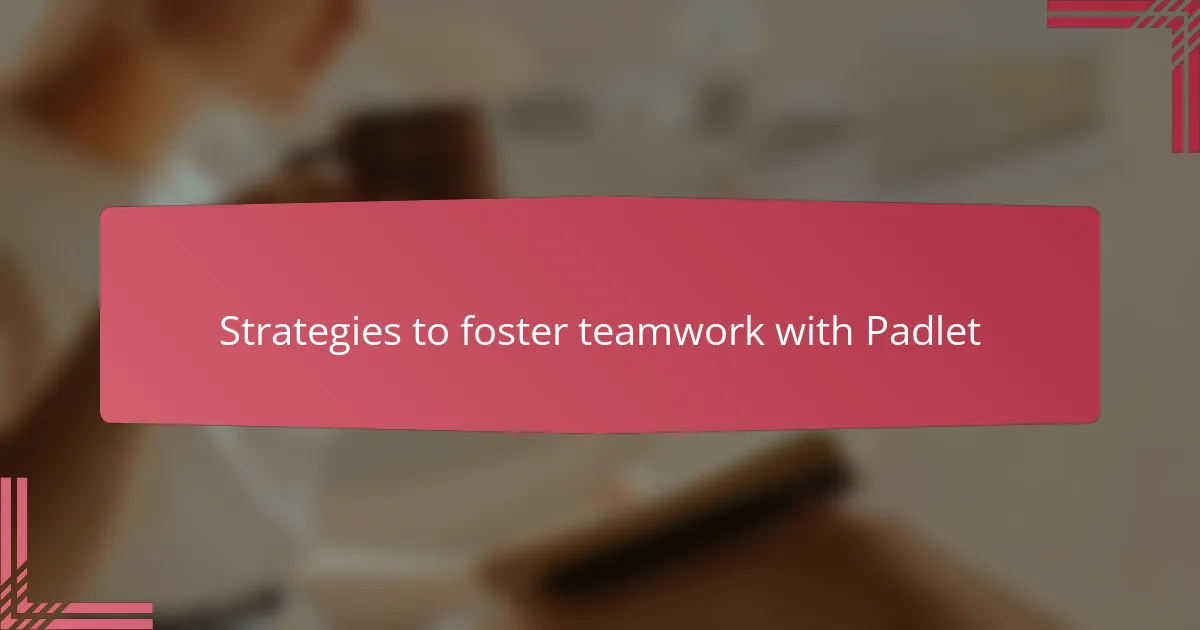
Strategies to foster teamwork with Padlet
One strategy I found effective was assigning small group tasks on Padlet that required students to build on each other’s posts. Have you ever noticed how teamwork deepens when everyone feels their contribution matters? This method not only sparked lively discussions but also helped students appreciate diverse perspectives in real time.
I also encouraged students to comment thoughtfully on their peers’ ideas rather than just posting their own. It felt rewarding to see how these interactions transformed Padlet from a static board into a vibrant community of learners, where feedback became a bridge rather than a barrier. In my experience, prompting curiosity through questions on Padlet threads elevated both engagement and critical thinking.
Lastly, keeping the collaboration ongoing was vital—so I set up recurring themes for weekly Padlet reflections connected to our activist goals. This rhythm helped sustain momentum and cultivated a habit of collective accountability. Have you ever witnessed the power of consistency in teamwork? For me, it turned individual efforts into a shared journey toward meaningful action.
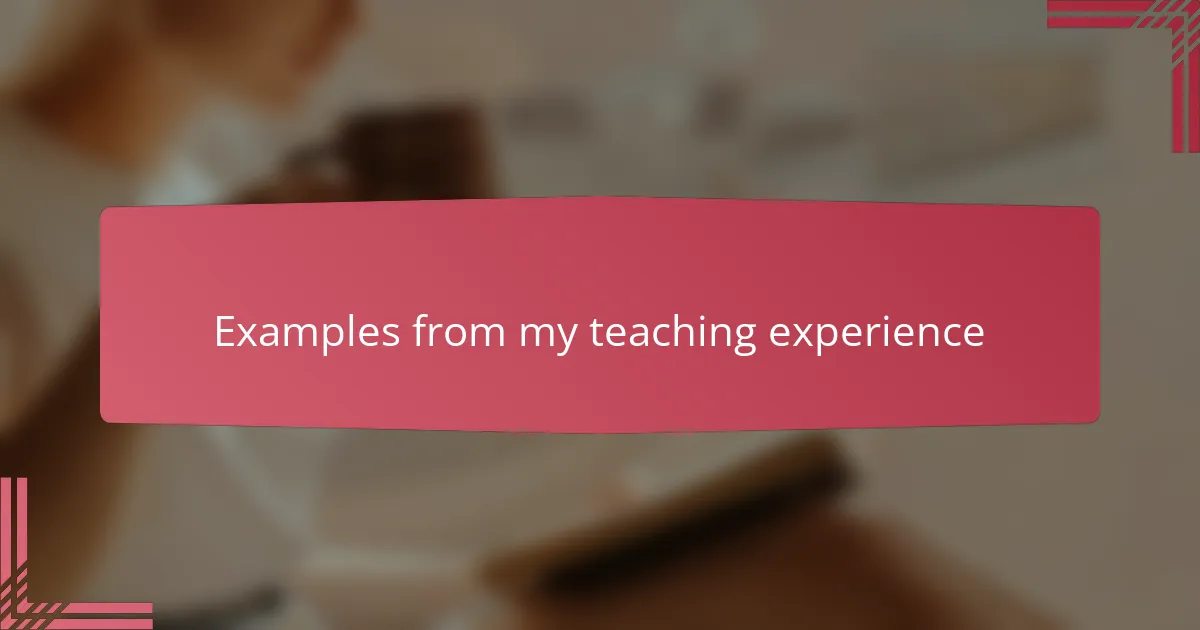
Examples from my teaching experience
One memorable instance was when my students used Padlet to map connections between local issues and global movements. Watching them link ideas—and sometimes debate viewpoints—right there on the screen made me realize how technology can bring abstract activism concepts to life. Have you ever seen a classroom light up because the learning suddenly feels relevant and urgent? That’s exactly what happened.
In another class, I gave students the task of documenting community stories on Padlet. One shy student surprised everyone by sharing a powerful narrative about her family’s experience, sparking empathy and deeper conversations. It reminded me how a simple digital platform can create safe spaces for voices that might otherwise go unheard.
Finally, I recall a project where students collaboratively planned an awareness campaign using Padlet’s timeline feature. The way they organized their ideas, assigned roles, and tracked progress digitally was impressive—and it made me appreciate how collaboration tools can turn activism into tangible, collective action. Doesn’t seeing theory evolve into real steps give teaching a whole new meaning?
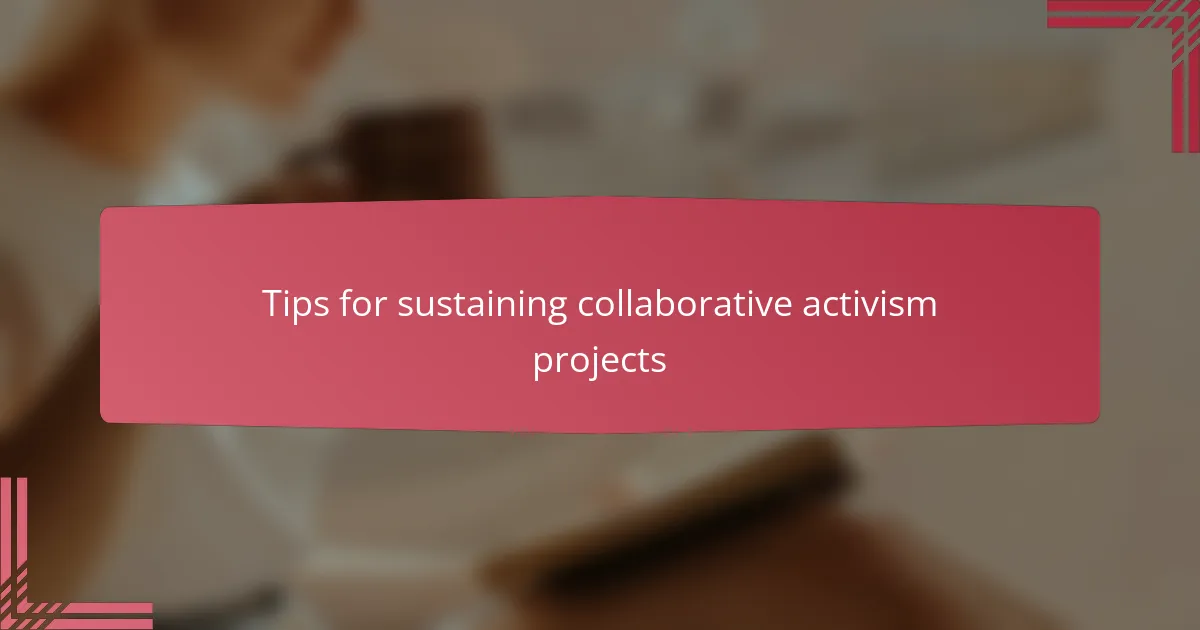
Tips for sustaining collaborative activism projects
Keeping collaborative activism projects alive takes more than just good intentions—it demands ongoing attention and care. From my experience, setting regular check-ins on Padlet keeps the energy flowing and the commitments fresh. Have you ever noticed how projects fade when momentum stalls? Those little digital nudges make a huge difference in sustaining engagement.
Another tip I’ve found invaluable is celebrating small wins publicly on Padlet. A simple “shout-out” post or highlighting a student’s contribution sparks motivation and reminds everyone that their efforts matter. When I did this, the atmosphere shifted—collaboration felt less like a chore and more like a shared purpose, reinforcing the community we were building.
Lastly, I believe it’s crucial to stay flexible and responsive to the group’s evolving needs. Sometimes, I adjusted the Padlet setup mid-project by adding new categories or prompts based on student feedback. Doesn’t that adaptability help maintain a sense of ownership and relevance? In my view, that openness is what keeps collaborative activism alive and thriving over time.